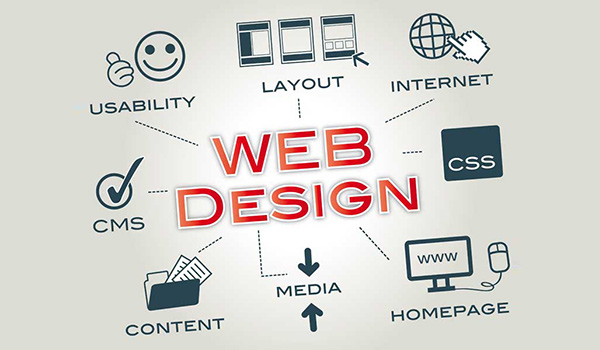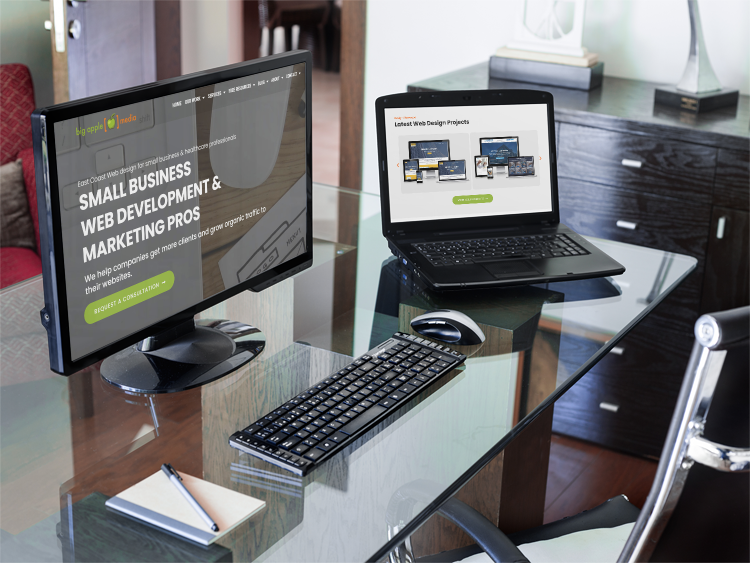Why Holistic Web Design Is the Key to a Seamless Customer Experience
In today's digital landscape, the value of holistic internet design can not be overemphasized, as it elaborately weaves together aesthetics, use, and performance to create a smooth customer experience. By adopting a thorough strategy that focuses on individual needs and leverages responses, developers can boost the general communication with their platforms.
Recognizing Holistic Website Design

Integrating customer responses and behavioral data is vital in all natural website design. This repetitive process assists developers to recognize discomfort points and locations for renovation, making certain that the end product resonates with customers. Furthermore, holistic layout stresses the significance of availability, guaranteeing that all customers, no matter of their capabilities, can navigate and engage with the website effectively.
In addition, the integration of receptive style principles is essential in accommodating numerous gadgets and display sizes, additionally enhancing the customer experience. By comprehending the interconnectedness of these elements, developers can create web sites that not only attract but additionally keep customers, eventually driving interaction and conversions. Alternative website design is, as a result, a tactical approach that cultivates a significant partnership between users and electronic spaces, leading the way for sustainable online success.
Crucial Element of Holistic Design

An additional vital aspect is uniformity in aesthetic and useful elements across the site. This involves keeping a cohesive shade palette, typography, and design, which aids individuals browse the website intuitively - happy web design. In addition, receptive design is necessary, making sure that the internet site carries out optimally across different gadgets and display sizes
Availability is additionally a vital element of alternative style. By sticking to availability criteria, developers can produce inclusive experiences that provide to diverse individual teams, including those with specials needs. The assimilation of material strategy makes sure that useful information is provided clearly and succinctly, boosting understanding and involvement.
Lastly, efficient cooperation among design, advancement, and advertising and marketing groups cultivates a unified vision that straightens with service purposes. By concentrating on these crucial aspects, all natural website design can deliver an improving user experience that is both engaging and functional.
Advantages of a Smooth Experience
Producing a smooth individual experience uses numerous benefits that significantly enhance general contentment and interaction. At its core, a smooth experience cultivates a sense of ease and intuitiveness, allowing users to navigate a website or application effortlessly. This decrease in friction not just boosts the probability of users returning however also enhances their willingness to suggest the system to others.
Moreover, a smooth experience leads to enhanced conversion rates. When customers find what they require with marginal effort, they are extra inclined to finish desired activities, such as purchasing or authorizing up for an e-newsletter. This effectiveness equates into More Help higher consumer retention, as pleased individuals are extra most likely to come to be dedicated advocates for the brand.
Additionally, a natural and smooth user interface minimizes cognitive tons, enabling users to concentrate on web content instead than having a hard time with navigation or style disparities. This quality not only enhances customer satisfaction but also reinforces brand reputation. Eventually, focusing on a seamless individual experience leads to an affordable benefit, as organizations that buy this element are much better placed to fulfill the developing assumptions of their target market and drive long-lasting success.
Executing Holistic Techniques
To accomplish a really seamless individual experience, organizations must adopt all natural methods that consider every element of layout and capability. This approach begins with an unified vision that lines up staff member across various techniques, including UX/UI style, content development, and technological implementation. Effective collaboration fosters a shared understanding of customer demands and objectives, permitting more coherent style options.
Next, it is critical to develop customer identities and trip maps that mirror the diverse demographics and habits of the target market. By understanding with individuals' viewpoints, companies my review here can prepare for obstacles and improve communications throughout the digital experience.

In addition, regular branding and messaging must permeate every touchpoint, guaranteeing a recognizable and credible visibility that improves customer interaction. Incorporating receptive style principles is likewise essential, as customers now interact with web content throughout multiple devices.
Moreover, companies need to focus on accessibility, making sure that all users, no matter ability, can navigate and profit from their digital offerings. By installing these all natural approaches into the style process, companies can produce a cohesive and enjoyable individual experience that promotes fulfillment and loyalty.
Gauging User Experience Success
While attaining an all natural approach to website design is necessary, determining individual experience success is similarly essential to ensure that style approaches properly meet customer needs. This requires a mix of qualitative and quantitative metrics to get an extensive understanding of user interactions and satisfaction levels.
Key performance indicators (KPIs) such as individual interaction, conversion prices, and bounce rates offer useful quantitative insights. For instance, a high conversion rate may indicate that users find the layout intuitive and compelling. Conversely, elevated bounce prices can indicate that users are dissatisfied or overwhelmed, necessitating a reevaluation of the Discover More design elements.
Qualitative measures, including individual comments, surveys, and functionality screening, are essential for acquiring deeper insights into the customer experience. Analyzing user remarks can reveal pain points and locations for improvement, while use tests permit designers to observe real-time communications and determine obstacles individuals encounter.
Eventually, the assimilation of these dimension techniques permits constant refinement of internet style, guaranteeing it stays user-centered and reliable in providing a smooth experience (happy web design). On a regular basis taking another look at these metrics will make it possible for developers to adjust to advancing individual needs and preferences, solidifying the overall success of a holistic web design strategy
Verdict
Finally, all natural website design emerges as a fundamental strategy to attaining a smooth user experience. By integrating visual appeals, functionality, and usability, this layout approach addresses diverse customer requirements and preferences. The emphasis on user-centered techniques not just enhances navigation and contentment but additionally fosters brand reputation and access. Ultimately, the execution of alternative design concepts substantially adds to boosted conversion rates and consumer retention, establishing a durable framework for effective digital communications.
Comments on “Enhance your brand’s visibility online with holistic web design approaches.”